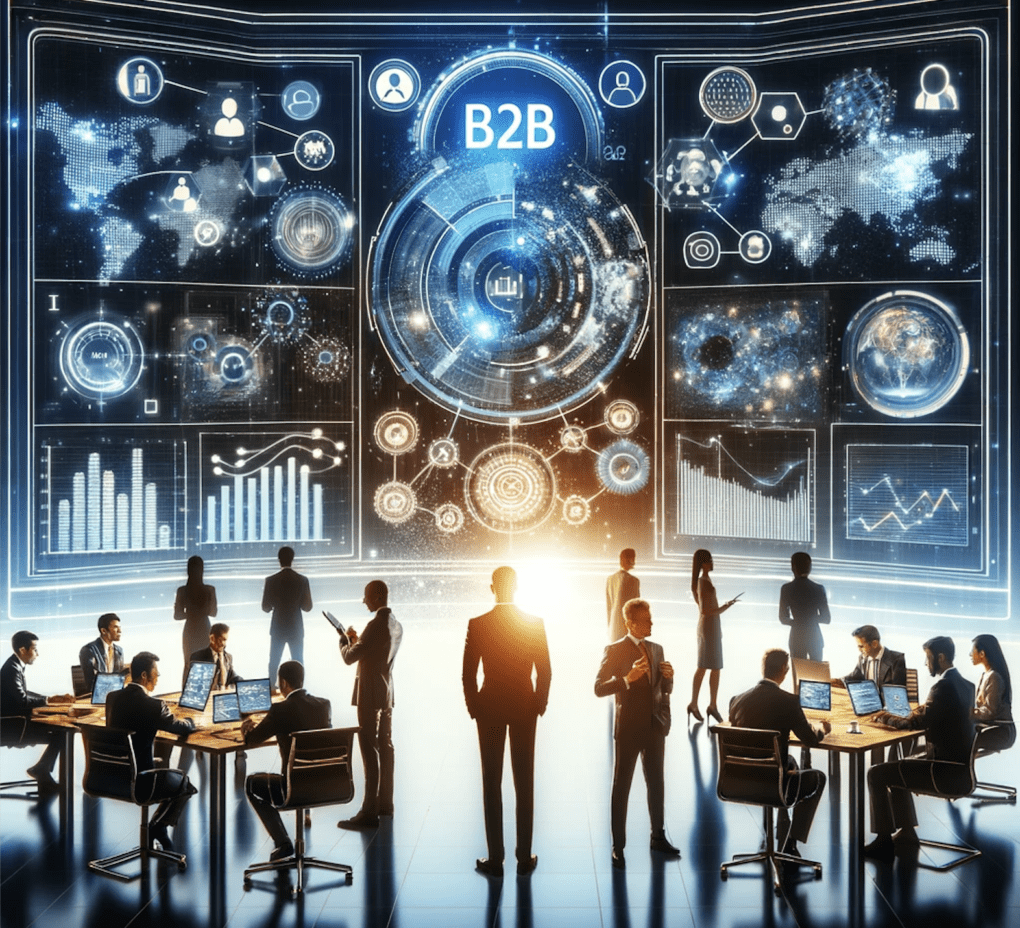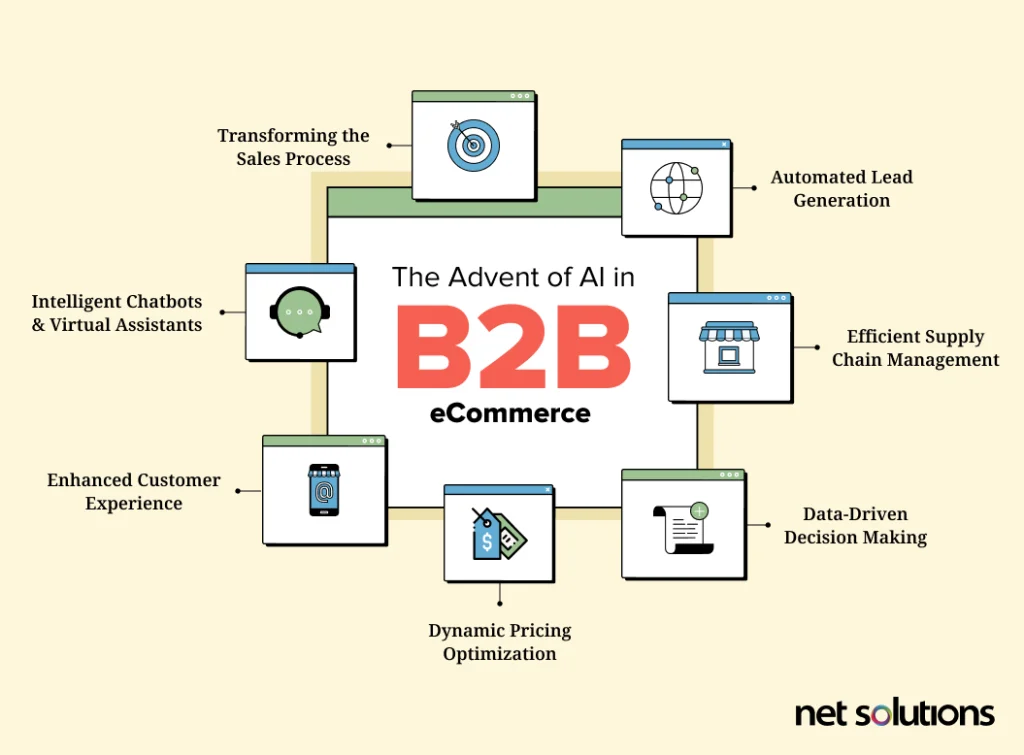Open Performance and Growth With AI Automation for B2B Business
AI automation is transforming the landscape for B2B business. It reduces and improves operations dependence on human treatment. This shift permits businesses to make quicker, data-driven decisions. As organizations check out which refines to automate, they have to likewise think about the right devices to carry out. However, difficulties continue to be in adopting AI modern technology. Minarik AI. The implications of these modifications could form the future of lots of companies in means yet to be completely comprehended
Recognizing AI Automation in the B2B Context
As companies increasingly seek efficiency, comprehending AI automation in the B2B context becomes crucial. AI automation involves using sophisticated technologies to improve procedures, reduce human intervention, and improve decision-making processes. In the B2B landscape, this can materialize in different forms, such as automating customer care interactions, taking care of supply chain logistics, or optimizing marketing projects. Business can utilize AI to evaluate huge datasets promptly, enabling them to recognize trends and insights that educate strategic choices. AI systems can incorporate perfectly with existing technologies, offering a cohesive platform for taking care of business features. This understanding prepares for companies to discover how AI can change their operations, improve efficiency, and eventually foster sustainable growth in an open market.
Key Advantages of Implementing AI Automation

Recognizing Procedures Suitable for Automation

Choosing the Right AI Devices for Your Business
When B2B business think about automating their processes, selecting the appropriate AI devices comes to be vital for attaining wanted end results. Companies need to begin by assessing their one-of-a-kind requirements and goals, making sure positioning with organization objectives (Minarik AI). Reviewing the adaptability, combination, and scalability abilities of prospective tools is essential, as these aspects determine long-term efficiency. Organizations ought to also think about user-friendliness and the level of assistance provided by vendors, as these aspects can affect successful implementation. On top of that, analyzing customer testimonials and situation studies can provide insights into exactly how particular AI solutions do in real-world situations. By meticulously choosing AI devices that fit their functional demands, B2B firms can boost effectiveness and drive development while reducing potential disruptions
Getting Over Obstacles in AI Fostering
B2B firms usually experience considerable difficulties in taking on AI innovations, specifically issues associated to information quality and resistance to change monitoring. Poor data top quality can hinder the efficiency of AI systems, while worker unwillingness to accept new procedures can delay implementation initiatives - AI Automation For B2B. Addressing these difficulties is crucial for successful AI assimilation and optimizing its prospective benefits
Data High Quality Issues
Assuring high data high quality is vital for the effective fostering of AI innovations in business-to-business settings. Imprecise, incomplete, or out-of-date information can significantly impede AI campaigns, leading to erroneous understandings and bad decision-making. Business usually encounter difficulties such as data silos, variances throughout different sources, and a lack of standardized information styles. To overcome these concerns, organizations have to spend in data cleansing, assimilation, and administration procedures. Implementing robust information management techniques ensures that the info fed into AI systems is relevant and dependable. Promoting a society of information top quality understanding amongst workers can boost data accuracy over time. By attending to data high quality issues, B2B business can release the full potential of AI automation, driving efficiency and growth.
Modification Administration Resistance

Determining the Influence of AI Automation
Measuring the influence of AI automation in B2B firms needs a clear understanding of crucial performance indications (KPIs) that line up with company purposes. Efficient data evaluation strategies are necessary for interpreting the results, while durable ROI assessment strategies aid determine the monetary advantages of automation efforts. Together, these elements provide a substantial framework for evaluating AI's contributions to business success.
Trick Efficiency Indicators
Secret performance indicators (KPIs) work as necessary tools for B2B firms to evaluate the performance of AI automation efforts. By developing clear metrics, companies can measure enhancements in operational effectiveness, price decrease, and earnings growth directly attributable to automation. Typical KPIs include cycle time reduction, mistake prices, client satisfaction ratings, and employee performance degrees. These indicators offer understandings into just how AI systems are enhancing procedures and improving total efficiency. In addition, tracking KPIs enables business to determine areas for further renovation and to Minarik AI line up AI automation efforts with tactical service goals. Eventually, a well-defined framework of KPIs assurances that B2B companies can quantitatively examine the influence of AI automation on their operations and drive continual development.
Data Evaluation Strategies
Effective information analysis techniques play a necessary role in reviewing the effect of AI automation within B2B business. By utilizing statistical techniques, organizations can determine patterns and patterns in operational data, allowing them to evaluate the efficiency acquires accomplished through automation. Techniques such as regression analysis and time series forecasting provide insights into just how AI-driven procedures affect productivity and decision-making. In addition, information visualization tools can successfully interact findings to stakeholders, assisting in notified critical choices. Maker discovering algorithms can further enhance evaluation by predicting future outcomes based upon historic data, offering actionable insights. Ultimately, these strategies make it possible for B2B business to measure success and optimize their AI automation campaigns, making sure positioning with company objectives and boosting general performance.
ROI Analysis Methods
Assessing the return on investment (ROI) of AI automation is essential for B2B firms seeking to recognize the monetary implications of their technical efforts. Firms can utilize various ROI analysis methods to gauge the performance of AI implementations - Growth Systems For B2B. One efficient strategy includes calculating expense savings by comparing functional expenses prior to and after automation (Minarik AI). Furthermore, determining productivity renovations with essential efficiency indicators (KPIs) aids measure the benefits of AI. Client complete satisfaction metrics can also give insights right into the effect of automation on service high quality. To guarantee a detailed evaluation, firms must consider both straight intangible advantages and financial returns, such as boosted decision-making capabilities and affordable benefit. This complex assessment makes it possible for B2B companies to make educated decisions relating to future financial investments in AI modern technology
Future Patterns in AI Automation for B2B Companies
What innovations lie ahead for AI automation in B2B business? Arising fads indicate a substantial shift towards boosted data analytics abilities, making it possible for companies to make even more informed decisions. Predictive analytics will certainly become significantly important, allowing business to prepare for market changes and customer requirements. In addition, the assimilation of AI with Internet of Things (IoT) innovation is anticipated to simplify procedures by providing real-time insights and automation of processes. Business will likewise concentrate on boosting consumer experiences via personalized marketing driven by AI algorithms. Additionally, improvements in all-natural language handling will certainly promote far better interaction in between customers and organizations. As these trends evolve, B2B companies have to adjust to utilize AI automation successfully, guaranteeing sustained development and affordable benefit.
Often Asked Concerns
What Industries Benefit the Most From AI Automation in B2B?
Production, financing, health care, and logistics markets benefit the most from AI automation in B2B. These sectors take advantage of AI to maximize processes, boost decision-making, and improve total functional efficiency, driving significant growth and technology.
How Does AI Automation Impact Staff Member Duties and Responsibilities?
AI automation reshapes staff member functions and responsibilities by simplifying repeated tasks, enabling employees to focus on critical efforts. This change promotes skill growth, enhances performance, and motivates collaboration, inevitably driving organizational development and development.
What Prevail False Impressions About AI Automation in B2B?
Usual mistaken beliefs about AI automation in B2B include anxieties of task loss, ideas that AI can fully change human judgment, and undervaluing the significance of cooperation between AI systems and workers for ideal outcomes.
How Can Services Ensure Data Privacy With AI Automation?
Services can assure information personal privacy with AI automation by implementing robust file encryption procedures, sticking to governing conformity, performing normal audits, and training staff members on data handling methods to minimize risks and protect sensitive information.
What Are the Costs Connected With Executing AI Automation?
The expenses connected with applying AI automation consist of software acquisition, infrastructure upgrades, training personnel, ongoing upkeep, and possible downtime throughout integration. In addition, companies might incur costs connected to data safety and security and compliance procedures.
Determining the influence of AI automation in B2B companies requires a clear understanding of essential performance indications (KPIs) that line up with company objectives. Key efficiency indications (KPIs) serve as necessary tools for B2B business to evaluate the effectiveness of AI automation campaigns. Reliable data analysis strategies play a crucial function in assessing the impact of AI automation within B2B companies. Reviewing the return on investment (ROI) of AI automation is important for B2B firms looking for to understand the economic ramifications of their technological efforts. What technologies lie in advance for AI automation in B2B business?